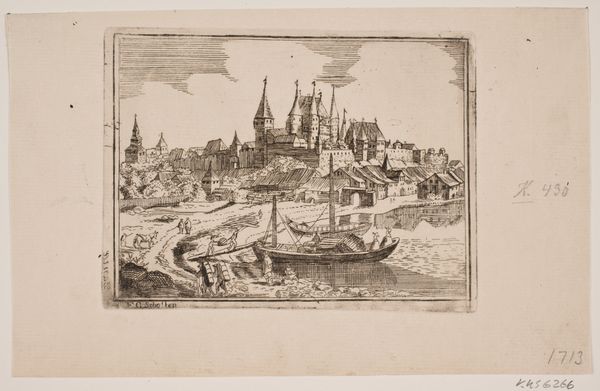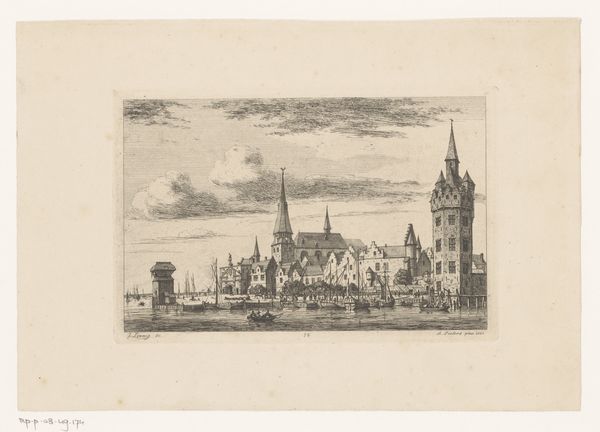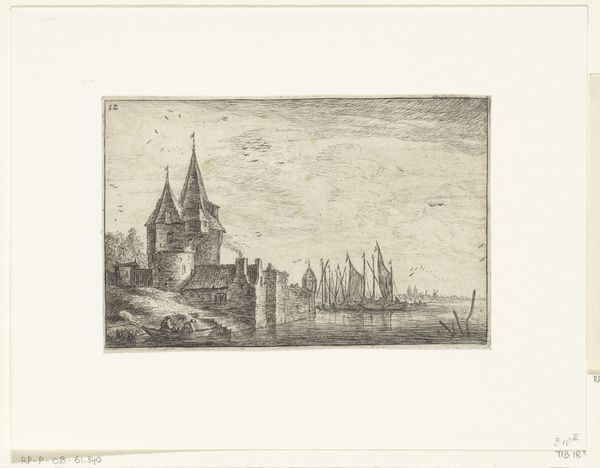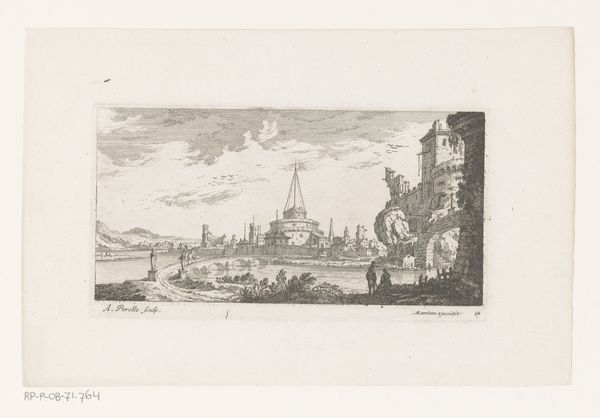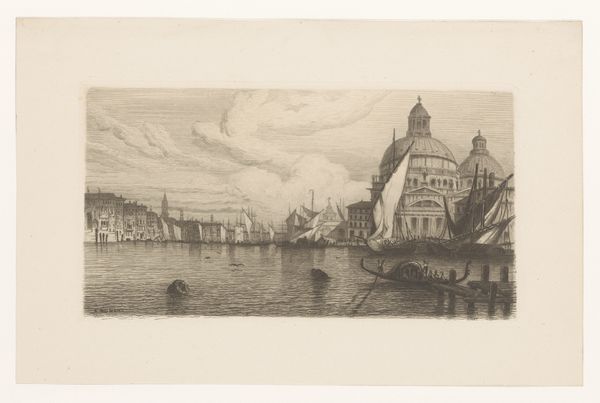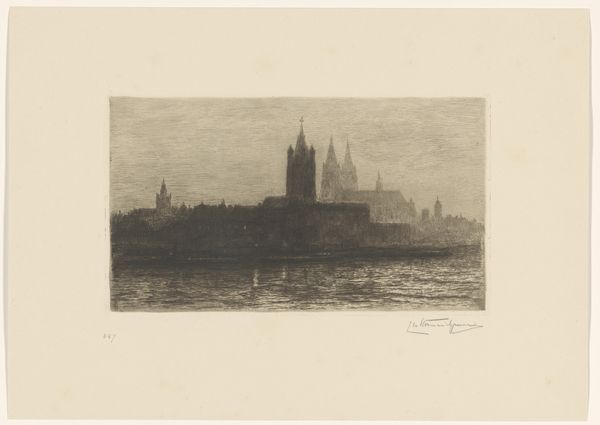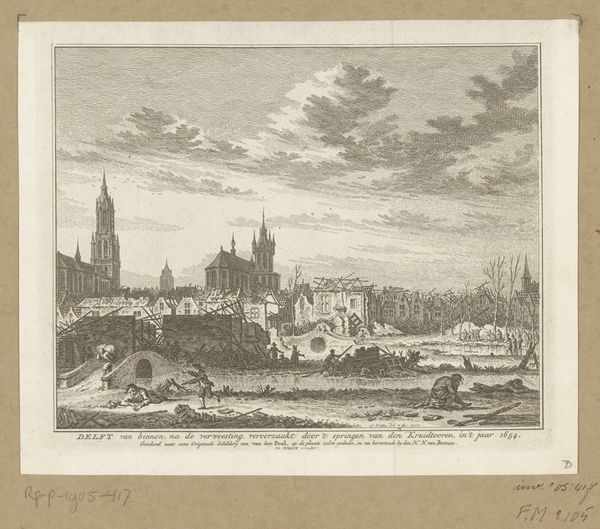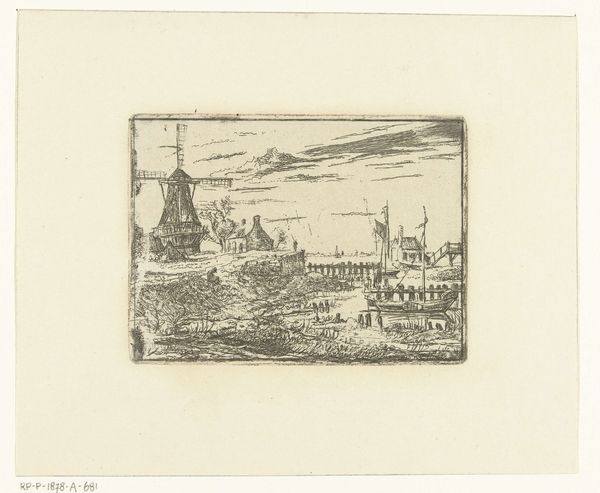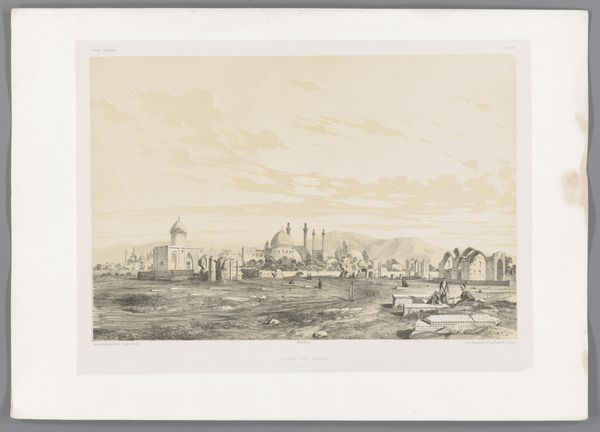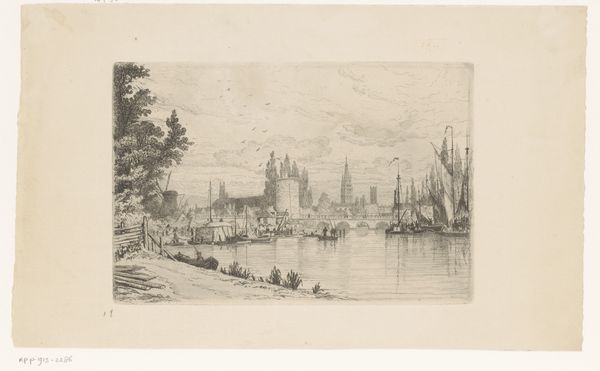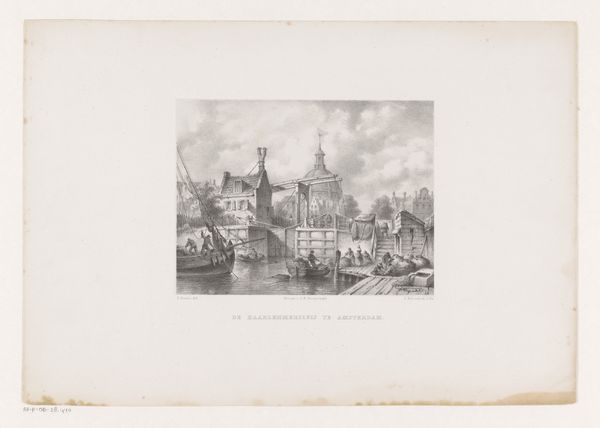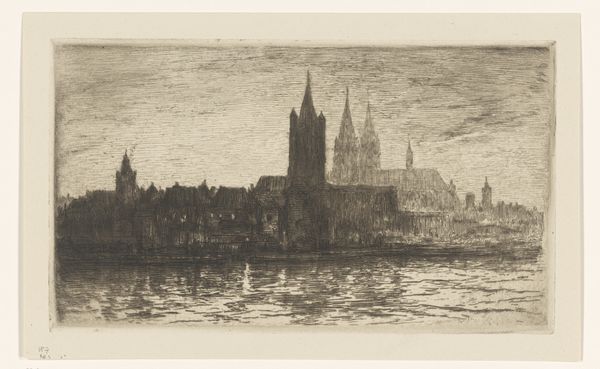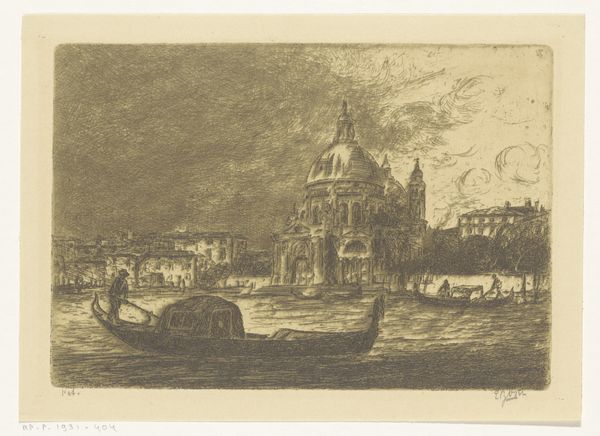
Dimensions: height 130 mm, width 195 mm
Copyright: Rijks Museum: Open Domain
Curator: Here we have Jean Théodore Joseph Linnig's "Gezicht op de werf in Antwerpen vanaf de Schelde," an etching from 1868. The "View of the Antwerp shipyard from the Scheldt," to put it in simpler terms for my fellow monoglots. Editor: Wow, that title’s a mouthful! My first thought? Tranquility. Despite being a shipyard, it feels so… peaceful. All those spires and clouds mirrored in the water, a softer touch for such an industrial place. Curator: It is a remarkably serene take. Linnig’s choice to depict a shipyard this way perhaps underscores the importance of Antwerp as a booming center of trade and industry during the mid-19th century. Look at the scale of everything, the way he balances all these architectural elements! The Church is right up there, the ships. You can’t miss that activity of the Scheldt river at the foreground either, can you? Editor: No, definitely. It almost romanticizes industry, which is quite an angle. Do you think Linnig chose etching for its detail or something else? All those intricate lines… Curator: Well, printmaking, especially etching, became increasingly important in distributing images, creating a visual record of the period. This technique allowed Linnig to reach a wider audience. And think about the composition; it echoes older baroque cityscapes with a fresh twist of modernization. It seems as much about pride as pure documentation. Editor: Hmm. Pride, definitely. I think of how the people working in those shipyards might feel seeing themselves represented so… grandly. It is as though they, along with all other actors of this cityscape, were the main pillars of the painting. Did many artists capture city views like this? Curator: Oh, absolutely. Cityscapes like this offered powerful statements about urban identity and growth, serving as documents but also projecting civic ambitions. Artists like Linnig were part of shaping how Antwerp saw itself. They turned industry into an art of urban life. Editor: You know, I see that a lot clearer now. What initially struck me as quiet beauty, and technical craftsmanship, has far deeper cultural significance. It goes to show what layers of meaning can be packed in one serene, beautiful print. Curator: Precisely. I would say it allows us a moment of introspection when examining how our surroundings form and reform us. An art that keeps looking forward and looking back is timeless art indeed.
Comments
No comments
Be the first to comment and join the conversation on the ultimate creative platform.

